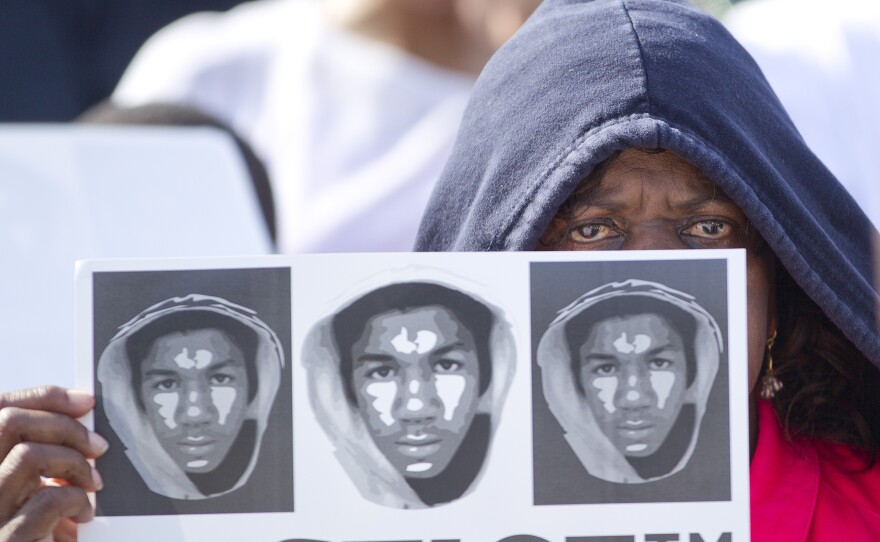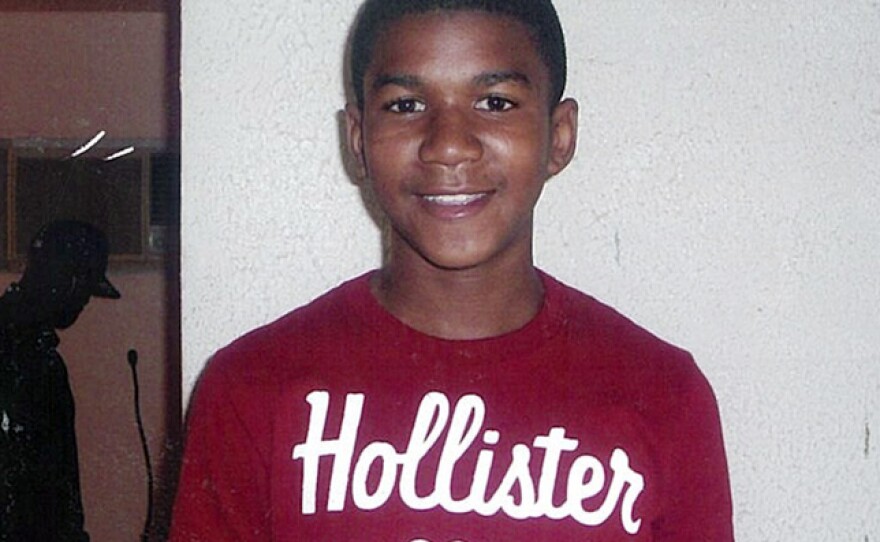

Note: The photo we're talking about is at the top of this Gawker article. Viewers may find it disturbing.
He looks... surprised. There is Trayvon Martin, on his back, ankles crossed, eyes open and mouth agape as if to say "whaaa?" But of course he isn't saying anything, because he's dead. The numbers around his body are markers for shell casings. Evidence.
Gawker ran the photo Friday, saying contributor Adam Weinstein received it Thursday night from an MSNBC watcher who captured it from the TV screen. Less than 24 hours later, it was Gawker's front page photo. It accompanied a furious opinion piece by Weinstein, with the headline "This, Courtesy of MSNBC, Is Trayvon Martin's Dead Body. Get Angry."
And people will be. At George Zimmerman, for pulling the trigger (and for claiming he had to, in self-defense); at MSNBC for running the painful photo. And at Weinstein for shocking readers with it.
But almost 60 years ago, Jet magazine shocked the nation and helped to jump-start the civil rights movement when it ran a shocking photo of another black teenager, 14-year-old Emmett Till, a Chicago teen who'd been lynched while visiting relatives in Money, Miss. Three days after Emmett was forced from his bed in the middle of the night, tortured, killed and thrown into a river with a 5-pound fan from a cotton gin wired around his neck, authorities pulled him up. His mangled body was placed in a casket, and he was returned to his mother. He'd been so badly beaten and water-damaged, there was little that even the most dedicated mortician could do to restore him.
It was Mamie Till who made the decision to leave her son's casket open. Simeon Booker, the legendary Jet magazine reporter (and later Washington bureau chief of Johnson publications), remembered the moment in his memoir, Shocking the Conscience: A Reporter's Account of the Civil Rights Movement.
Jet, Booker says, ran two photos, one borrowed from Mamie Till that showed a smiling young adolescent "with clear, creamy skin and light hazel eyes sparkling with the confidence of a kid who knows he's his mama's heart and soul." But it was the second photo that grabbed the nation: That, Booker wrote, showed "his unrecognizable, mutilated corpse, lying in a casket, exposed to the flash of the camera, as his mama insisted, so all the world could see what they'd done to her boy."
Mamie Till famously told the shocked funeral director, "Let them see what I've seen."
And the nation did. And the battle for equal rights began in earnest.
In his death photograph, Trayvon Martin looks distressed, but strangely graceful. There is no mutilation, as there was in the second Till photo. One can see the handsome young man he was growing into, and is struck afresh by the waste of human life.
Gawker's Weinstein apologized in advance to Sybrina Fulton and Tracy Martin for publishing an image he knows can only cause them pain. He could, he said, argue about its being in the public interest, about the fact that sooner or later, it will be widely circulated anyway.
There's an irony here, isn't there? Mamie Till made the courageous decision to display her child's mutilated body to the world, despite her pain.
In the publication of his death photo, Trayvon Martin's parents had that decision taken from them.
Weinstein is outraged that their child is dead. But even if his intentions were honorable, once more, the ability of black people to decide what's right for them, what's appropriate for them, has been usurped by nonblack people and institutions (MSNBC, Weinstein) that apparently feel they know better.
Seems like a step back into history, not forward.
Copyright 2013 NPR. To see more, visit www.npr.org.






